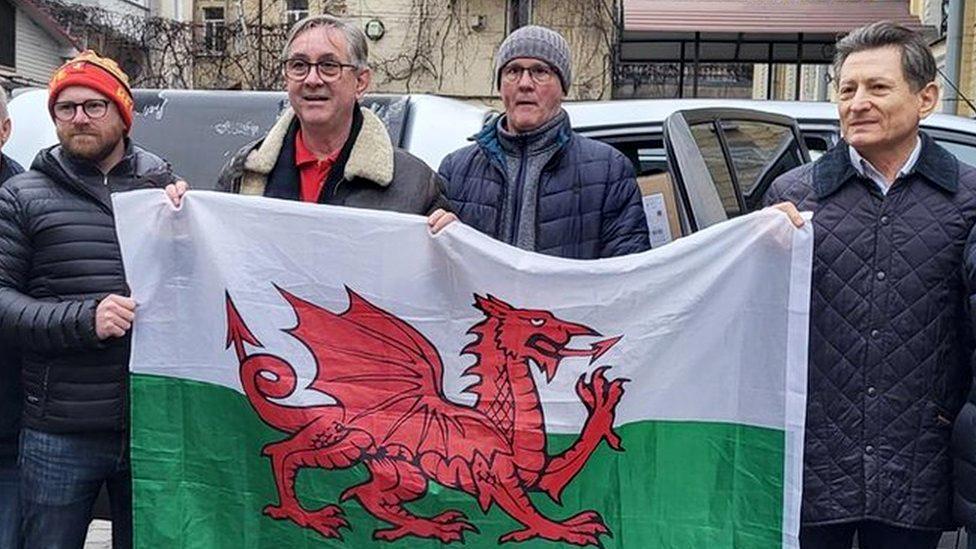Image of driver killed in miners' strike revealed
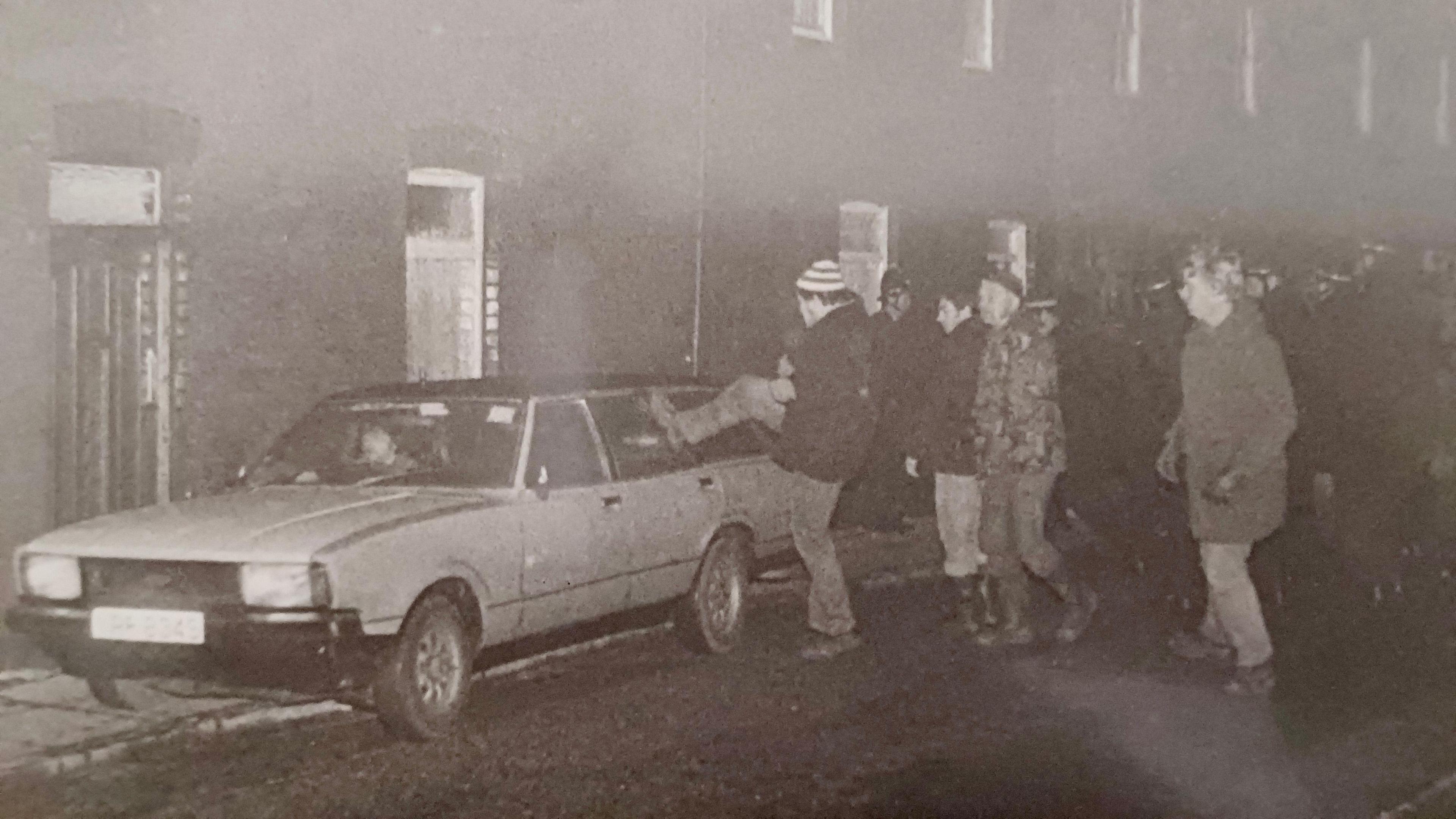
Taxi driver David Wilkie, pictured two days before he was killed
- Published
A photograph of a taxi driver killed by miners during the strike of the mid-1980s has been revealed for the first time.
The picture of David Wilkie was taken days before a concrete block was dropped from an overhead bridge by striking miners on to his car.
The 35-year-old was driving a working miner to a pit at the time.
Other unseen images show Margaret Thatcher, who was prime minister at the time on the day she was hit by eggs on a visit to south Wales during the strike.
Voices from the 1984 miners' strike
- Published25 February 2024
How did the miners' strike affect Wales?
- Published18 February 2024
'Without coal Wales would be part of England'
- Published4 January 2020
Richard Williams, from Cardiff, has been a press photographer in Wales since he was a teenager, covering the strike and subsequent decline of Welsh coal communities.
"The strike had an impact on the valleys communities as a whole," he said. "They were all badly affected by the income loss.
"Even if you weren't covering an item directly related to the strike, the impact was across the board and everything was affected.
"I was very aware of just how difficult things were for the miners and their families," he added.
"I don't think there's been a dispute before or since that went on for that length of time and was covered by that amount of media."
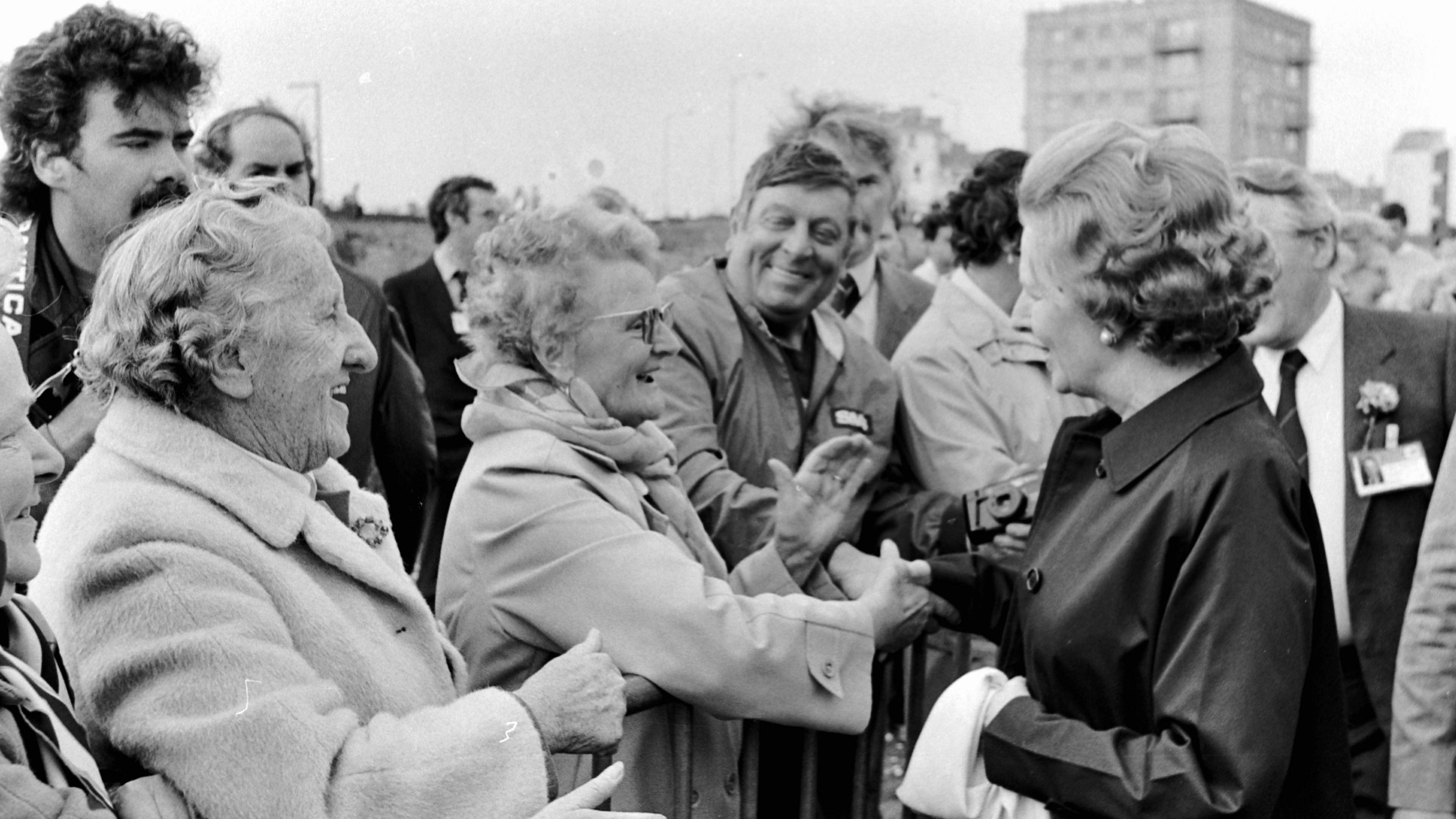
A previously unseen image of Margaret Thatcher outside the Grand Pavilion in Porthcawl
Richard has revealed previously unseen images of the day Mrs Thatcher visited the Grand Pavilion in the coastal resort of Porthcawl for the Welsh Conservative Party conference in June 1984.
She was visiting the town just before the so-called miners' fortnight, when thousands of pit workers and their families would ordinarily have been on holiday there.
Her visit followed the violent clashes in Orgreave, south Yorkshire, where miners and police attacked each other, resulting in casualties on both sides.
"As I was photographing the crowd there was a rise in volume, the crowd were shouting and I looked around and found she had been hit by an egg thrown from the crowd," he said.
"As I raised my camera a police officer quickly put up an umbrella to shield her from the rest of the eggs.
"I think they [the crowd] were all quite happy that it was a bull's eye hit," he said.
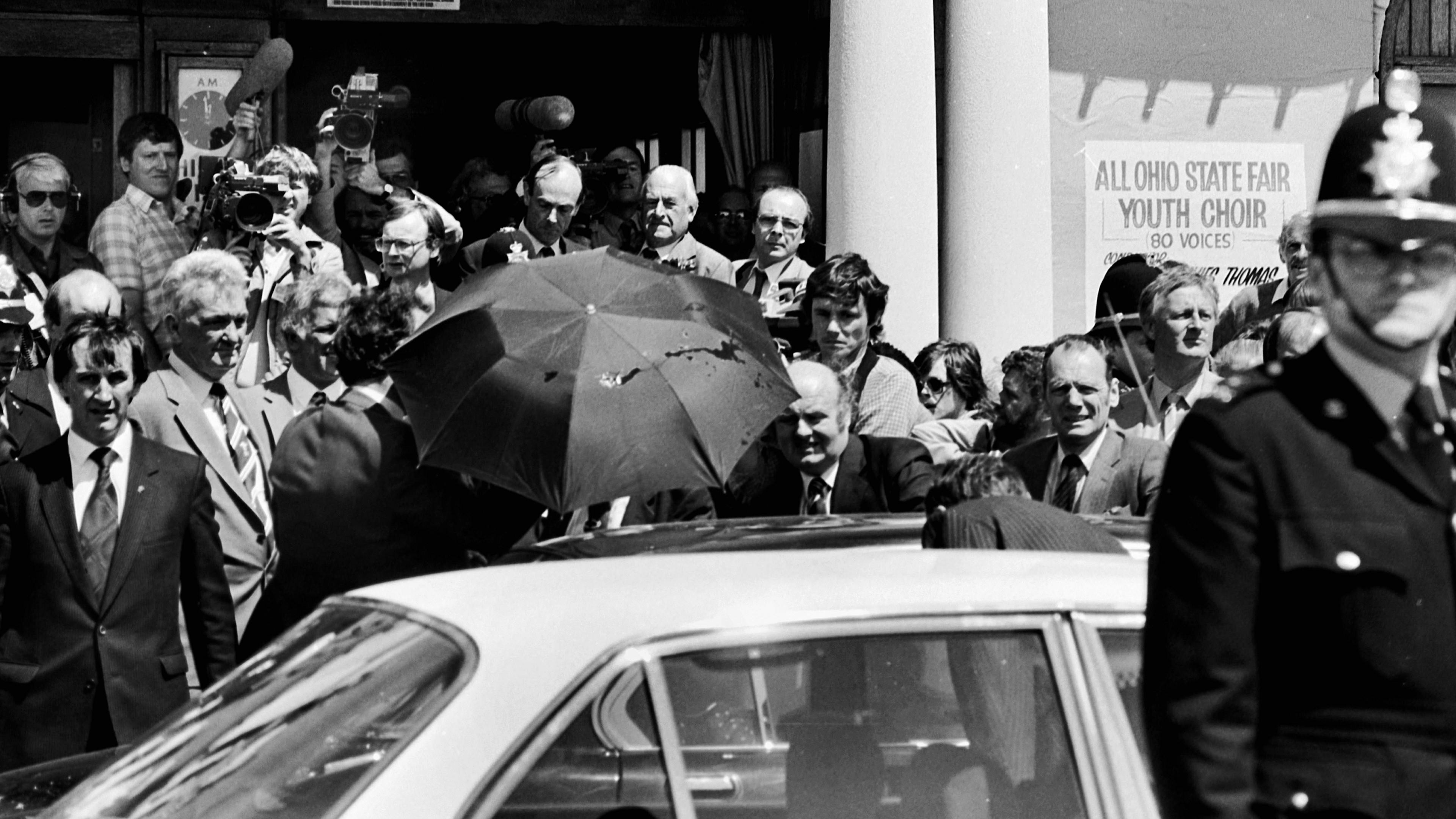
Margaret Thatcher being shielded from eggs thrown by the crowd in Porthcawl
Richard, who has published a book called Coal and Community in Wales, said miners were more willing to engage with him because he worked for Welsh newspapers.
He said he witnessed examples of biased reporting elsewhere.
Richard said: “There were sometimes angles taken that had to fill the editorial brief rather than what actually occurred on the day. I think there was a bit of that going on with the national press.
"They all had an agenda, whether they were on the side of the miners or more likely on the side of the government," he said.
"The national press were to some degree guilty of choosing images of high impact and drama, rather than actually showing what occurred that day.
"They would single out a picture of a picket being arrested, but that might have been the only picket arrested that day," he said.
After a career covering Wales’ industrial areas, Richard said very little had improved for coal communities.
Richard said: "Those jobs have gone and they've never been replaced".
"In my 40 years of travelling around the valleys, taking pictures, nothing ever seems to improve, it just gets worse.
"I don't think that governments and councils have done enough to try and bring industry back into the valleys," he said.

Police helmets on the ground after a confrontation during the strike
Newspaper front pages were filled with images of picket lines and pitched battles between miners and the police. TV and radio documented the fight, the hardship, and subsequent decline of the coal communities.
In Wales, many miners did not trust the London-based media, with a belief national newspapers were skewing their reporting to fit their own agenda, or to support the government line.

Journalists and conference attendees listening to Margaret Thatcher
It was not just professional photographers capturing the strike, however: the National Union of Mineworkers (NUM) called upon their own members to help document the dispute.
Mike Thompson from Llwynypia, Rhondda Cynon Taf, had rare access to the front lines of the dispute, and was able to capture how tense and violent it could be.
He was a miner, embedded with the miners, chosen by the NUM because of his talent with a camera.
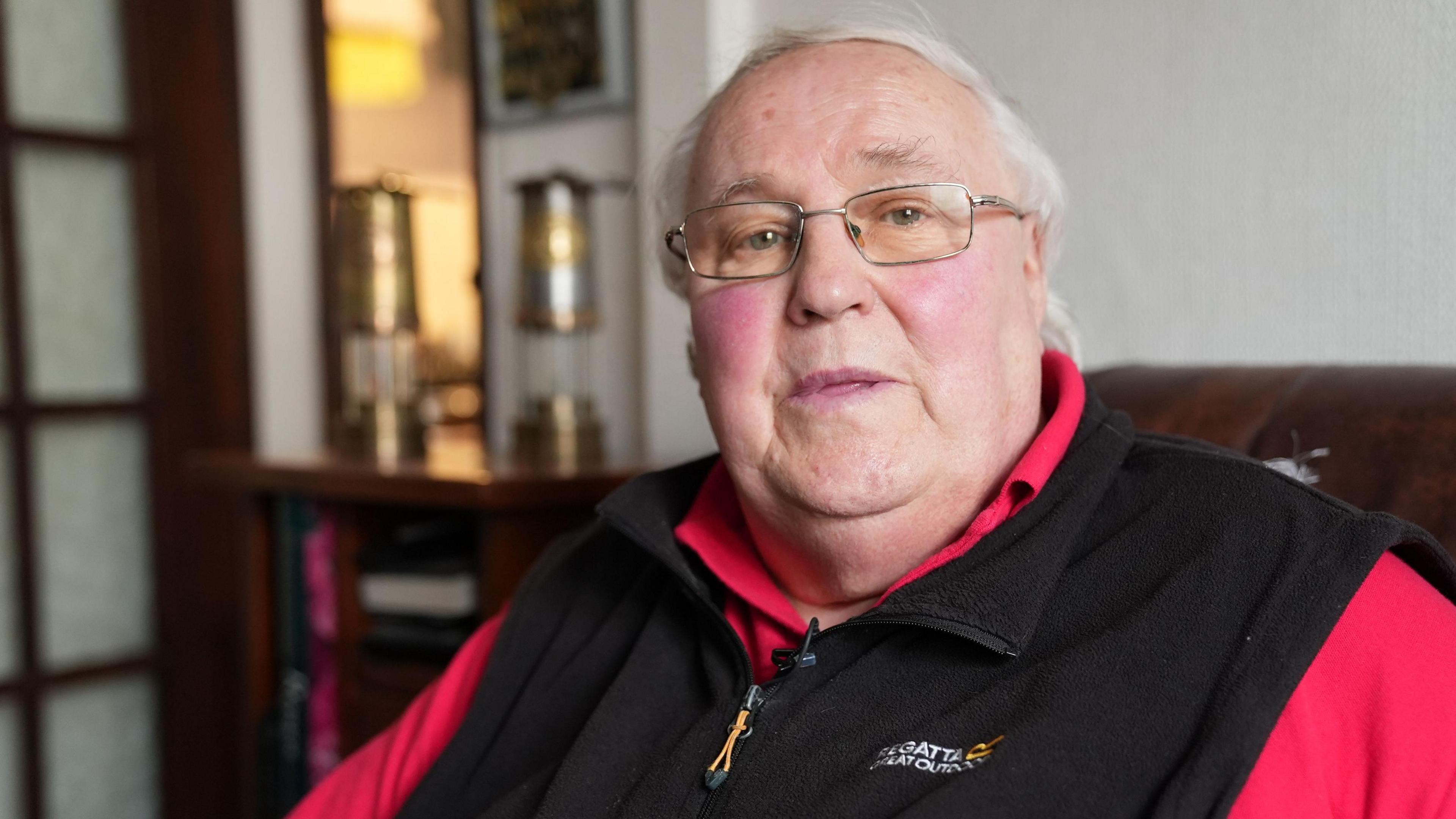
Mike Thompson was a miner appointed as a photographer by the NUM
He decided to pitch in after witnessing a particularly brutal incident.
He said: "I saw a 10-year-old boy getting struck with one of those big truncheons, and it just turned me - I nearly got hit myself.
"I was confronted by a policeman with one of those truncheons who took a swipe at me, missing me by a fraction."
Mike said he jumped through a nearby hedge to get away.
"The boys in the bus were looking out in horror," he said.
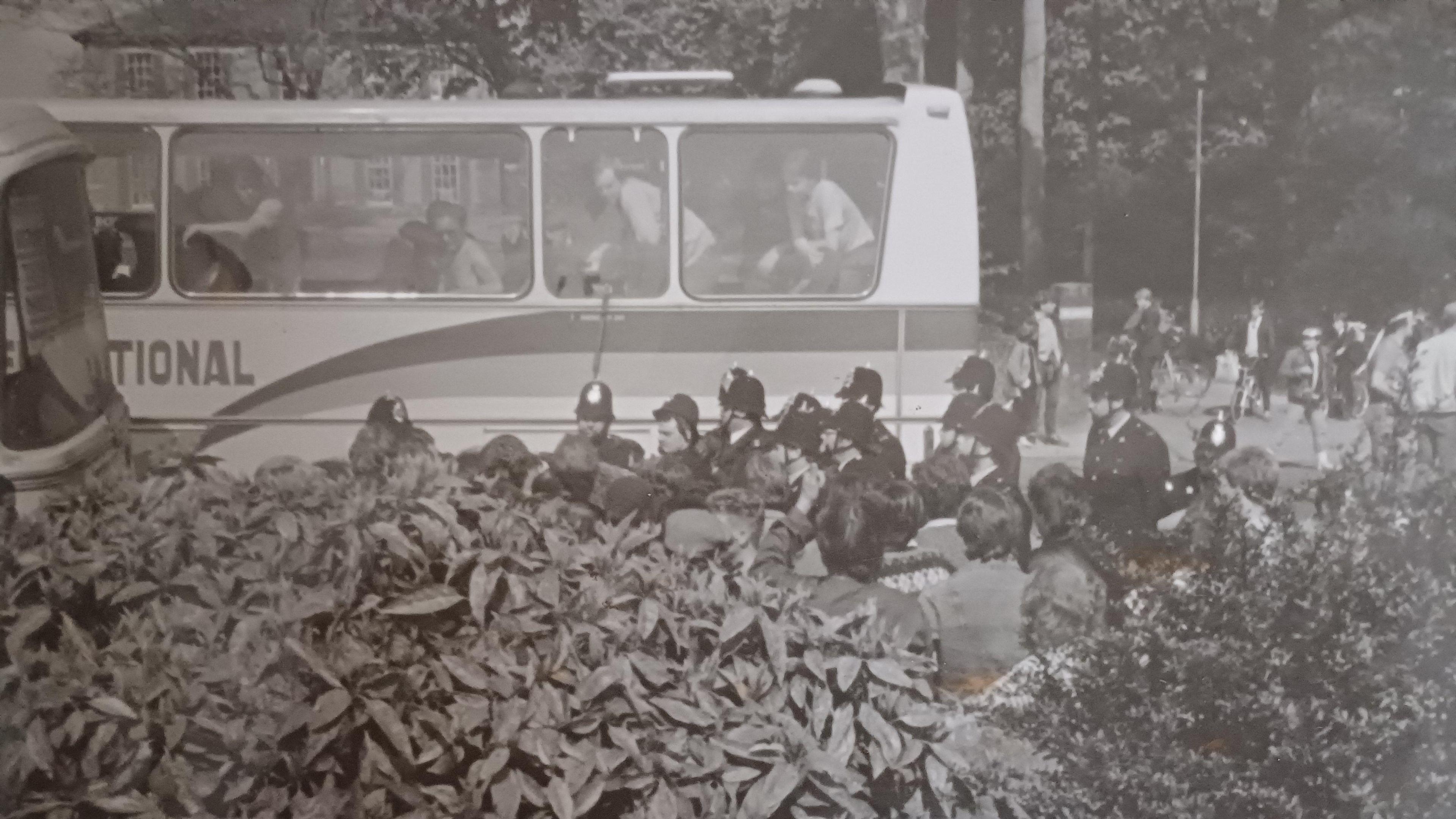
Mike Thompson became an NUM photographer after this incident
His up-close and personal style led to him being assaulted several times, and his images were used as evidence in court several times.
"Sometimes I was too close to it - I had a few bangs during the strike. At Phurnacite (smokeless fuel plant in the Cynon Valley) I had a sort of short arm off a policeman who took offence to me being there," he said.
"There was another case where I had a bump off a policeman just because I was in the wrong place.
"He was eyeing me up, I was taking a photograph of him and he didn't like what he was seeing.
"The next thing I know, he was letting fly with a fist and punched the camera itself, and that left a ring around my eye full of blood," he added.

Mike Thompson was able to gain rare access to picket lines
But one picture stands apart from the thousands Mike captured.
"This actually is a sad photograph which I have never shown before to anybody, except it should perhaps be shown," he said.
It shows a taxi driver with a fare in a narrow terraced street in Aberfan. On one side angry miners are kicking the car.
It is a picture of David Wilkie driving a miner who chose to work through the strike.
Two days later, Mr Wilkie was killed when a concrete block was dropped from a bridge above the Heads of the Valleys road as he drove miner David Williams to Merthyr Vale colliery. Mr Williams was not hurt.
"It was a sad day for everybody and it’s a day that has lingered for years.
"It's something that should not have happened, but it did. Two days before that, this photograph was taken," he said.
Mike was outside the colliery that day when miners were told to go home.
"As we were coming home, it gradually got round that this terrible thing had happened, and this taxi driver had been killed by one of the pickets," he said.
"I wasn't part of it, I didn't know about it, but my wife wouldn't speak to me for a week because she took it personally.
"We all felt ashamed, not only ashamed, but sad as well."
Two miners were jailed for life for murder, but their convictions were later reduced to manslaughter. They were released five years after Mr Wilkie's death.
Mike said now was the time to release the image.
“I've never shown it before, because I never wanted to gain anything, but I think after 40 years it's time somebody saw it.
"They can form their own thoughts - it's a historical document that people should see," he said.
- Published12 March 2014
- Published13 March 2014
- Published26 February 2024
